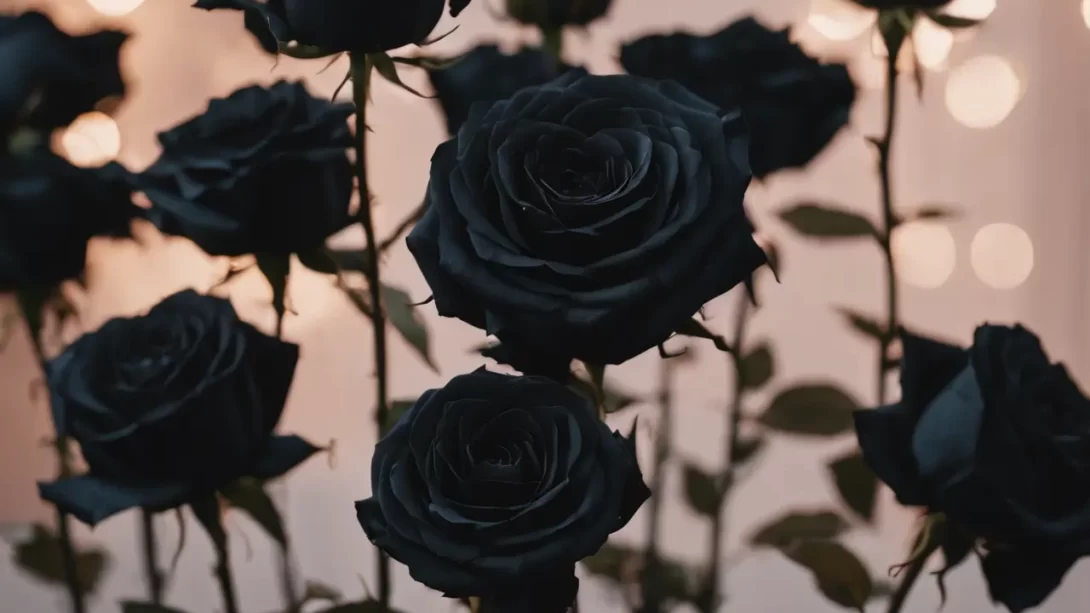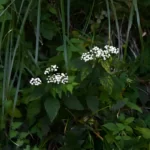The allure of black roses has captivated people for centuries, embodying a range of symbolism from mystery and elegance to mourning and rebirth. In various cultures, these enigmatic blooms have held a place of significance, often featured in art, literature, and ceremonies. However, it’s important to understand that true black roses do not exist in nature. What are commonly referred to as black roses are actually deep crimson or dark purple roses, with such a dense pigmentation that they appear black. This article delves into the ways to achieve or mimic this intriguing floral phenomenon.
The Nature of Black Roses
In the world of botany, rose coloration is a complex interplay of genetics. The pigments in roses are primarily carotenoids (yellows and oranges) and anthocyanins (reds, purples, and blues), but true black pigment is absent. The closest naturally occurring roses to the sought-after black hue are varieties like ‘Black Baccara’ and ‘Black Magic’, which have such deep red or purple petals that they can appear black, especially in certain lighting. These varieties are the result of meticulous breeding and careful selection.
Methods to Create Black Roses
There are several approaches to creating black roses, each with its own set of techniques and outcomes. These methods range from selecting naturally dark rose varieties, dyeing lighter roses, to experimental breeding for darker hues.
Selecting Dark Rose Varieties
For those seeking to grow roses that closely resemble black, choosing the right variety is crucial. Roses like ‘Black Baccara’, ‘Black Magic’, and ‘Midnight Blue’ are among the darkest available. These varieties can be sourced from specialized nurseries or online plant shops. Growing these roses requires the same care as other rose types, but with particular attention to conditions that highlight their dark coloration, such as adequate sunlight and proper soil.
Dyeing Roses Black
For an immediate black rose effect, dyeing is a popular method. This can be achieved by using floral sprays or natural dyes. The process typically involves carefully applying the dye to the petals of white or light-colored roses. However, a more natural-looking method involves absorption dyeing, where the rose stem is placed in water mixed with floral dye, allowing the plant to absorb the color into its petals. This technique requires patience and experimentation to achieve the desired depth of color.
Breeding for Darker Roses
The pursuit of breeding roses to achieve darker, near-black hues is both challenging and fascinating. It involves cross-pollinating different varieties of dark roses in the hope of producing offspring with even darker petals. This process requires a deep understanding of rose genetics and a lot of patience, as it can take several generations of roses to potentially achieve the desired color. Some renowned hybridizers have made significant strides in this area, contributing to the array of dark roses available today. While it’s a more time-intensive and uncertain method compared to others, breeding offers the possibility of creating unique and naturally darker rose varieties.
Caring for Dark Roses
Growing and maintaining dark roses, whether naturally dark varieties or dyed, demands specific care to ensure they retain their striking appearance.
- Sunlight Exposure: While roses generally thrive in sunlight, too much direct sun can fade the deep colors of dark roses. It’s important to find a balance where the roses receive enough light without the color being bleached by overexposure.
- Soil and Watering: Like all roses, dark varieties benefit from well-draining soil and consistent watering. Ensuring the soil is rich in organic matter can help enhance the vibrancy of the petals.
- Fertilization: Regular fertilization is key to maintaining healthy roses. Using a fertilizer high in phosphorus can help boost flower production and color intensity.
- Pruning: Proper pruning not only maintains the shape and health of the rose bush but can also impact flower production and quality. Removing dead or weak growth allows the plant to direct its energy into producing vibrant, healthy blooms.
Caring for dyed black roses involves additional considerations, especially in maintaining the color for as long as possible. It’s important to minimize handling and exposure to elements that could cause the dye to fade or wash off.
Creative Uses for Black Roses
Black roses can be a stunning addition to various floral arrangements and garden designs. In floral arrangements, they create a dramatic impact, often used to convey deep emotions or to add a touch of sophistication. Their unique appearance can make a bold statement in weddings, anniversaries, or as a centerpiece in special events.
In garden design, dark roses can provide a striking contrast against lighter flowers or foliage. They work well as a focal point in a garden or can be used to create a themed section, perhaps in a moonlight garden where their dark hues stand out in the twilight. The key is to balance their darkness with surrounding colors and textures to create a visually appealing composition.
When to Discard Blueberries
It’s essential to know when to discard blueberries to ensure safety and quality. If you observe any signs of mold, it’s best to throw the entire batch away. Mold can easily spread throughout the container, even if it’s not visible on every berry. Also, discard blueberries that are excessively soft, shriveled, or have an off smell or taste. Consuming spoiled blueberries can lead to foodborne illness, so it’s better to err on the side of caution.
Health Risks of Spoiled Blueberries
Eating spoiled blueberries poses health risks, such as food poisoning from harmful bacteria. Symptoms can include stomach upset, nausea, vomiting, and diarrhea. These bacteria can sometimes be present even if the berries don’t have visible mold. Therefore, it’s crucial to avoid eating blueberries that show any signs of spoilage.
Conclusion
Identifying bad blueberries is a simple yet important skill for anyone who enjoys this nutritious fruit. By paying attention to visual cues, texture, smell, and, cautiously, taste, you can ensure that you’re consuming blueberries at their best. Proper storage is key to prolonging their freshness, and knowing when to discard them is crucial for your health. Enjoy blueberries as part of your diet, but always be mindful of their condition to ensure you reap their full health benefits.



